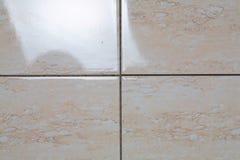Bowes Tile Co.
Even if you use a water-proof underlayment membrane, the floor will nonetheless be both 1/four″ or 1/2” greater than the subfloor, plus the thickness of the tile and adhesive. While you can lay tile instantly over a concrete slab utilizing skinny-set adhesive, don’t make the error of making use of tile on to a plywood subfloor. No matter how firm the subfloor; the plywood will increase and contract at a different rate because the tile, causing cracks to develop within the grout strains or tiles over time. In basic, tiles truly retain heat in order that they shouldn’t really feel chilly in your toes, however it could often depend upon the floor underneath the tiles.

Tile Q&A: Bathroom Tile and Grout — A Few Tips on Keeping Them Clean
A concrete slab makes a good underlayment for ceramic tiles, because it’s similar to the stable mortar bases that was once the usual for ceramic tile installation. However, the slab have to be flat, perfectly level, and never vulnerable to settling or heaving. You need to careful not to lay tile over the slab’s enlargement joints, which will lead to cracked mortar and broken tiles. The safest, most prudent course is to put in tile on high of acement backerboard corresponding to Durock, Wonderboard, or HardieBacker.
Most ceramic tiles are themselves just about resistant to water injury, for the reason that glazed surface is impervious to moisture. Before precise installation beings, the cement subfloor needs to be carefully ready, since the integrity of the subfloor will have an effect on the entire life of the ceramic ground above. The subfloor should be smoothed out, sanded, and made completely flat and even. If there are dips or cracks, self-leveling underlayment (SLU) compound—a cementitious dry powder that is combined with water—should be used to restore and fill them. If there are gaps or rises in the subfloor, these can turn into weak factors lurking beneath the tiles.
- Tile sizes range from 1/4-inch squares to 12-inch squares and larger.
- Keep grout out of joints wherever the ground meets the tub, shower, self-importance or partitions (Photo 15).
- The toilet flooring tile needs to be changed, unfortunately the builders used wall tile on the ground.
- If not, what is an effective technique of removing the hardwood with no scale saw to cut the ground into quadrants.
For the “splash zones” of backsplashes, countertops, tub surrounds, and bathe surfaces, epoxy paint ($20 to $35 per gallon) does the trick. This kind of paint cures right into a harder, extra durable coat that boasts extra resistance to moisture, warmth, and everyday put on-and-tear than its latex counterpart.
I felt this wasn’t right which led me to right here, however i suppose it’s too late now. I’ve found an space of rot in my plywood subfloor between my bathtub tub and toilet. While I prefer utilizing 1/2” cement backer board over a plywood subfloor, you may be able to get by with 1/four” backer board as an alternative.
There are many advantages to undertile heating such as providing you with extra wall area (no need for radiators), low running costs, and a extra efficient means of heating a room (in comparison with a radiator). Choosing the best tile size is much more involved than the measurements of your space. In addition to choosing these crucial components, deciding on the best sort of tile can also be important for your project. Cement tiles are one of the most durable products in the marketplace, perfect for floors, walls,bogs, and kitchens.
When an uncoupling membrane is also getting used, the ground should be leveled and repaired before the membrane is laid down. Plywood should be put in over an sufficient subfloor and have to be no less than 1 1/eight″ thick when combined with the subfloor. Interior-grade plywood and particleboard usually are not thought of robust sufficient for a tile installation. After pressing the boards into the mortar, screw them in with screws made especially for cement backer board installation.

